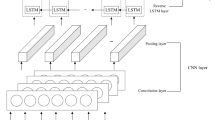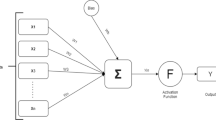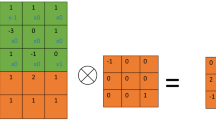Abstract
Reservoir modeling and inflow forecasting has a vital role in water resource management/controlling. Hydrological systems’ complex nature and problems in their application process have prompted researchers to look for more efficient reservoir inflow forecasting methods; hence, the development of artificial intelligence-based techniques in recent years has caused the hybrid modeling to become popular among hydrologists. To this end, effort has been made in the present study to develop a hybrid model that combines a Long-Short Term Memory (LSTM) algorithm—a special recurrent neural network—with a Convolutional Neural Network (CNN) algorithm for the reservoir inflow forecasting. To forecast the flow data, use was made of the support vector machines (SVM), Long Short-Term Memory (LSTM) algorithm, adaptive neuro-fuzzy inference system (ANFIS), Variable Infiltration Capacity (VIC) and autoregressive integrated moving average (ARIMA) model plus the data collected from the flow measurement stations of Doroodzan Dam reservoir in “Kor”—an important river in Fars Province, Iran. The model estimation results were evaluated by the RMSE, MAE, MAPE, MSE and R2 statistical criteria and showed that the hybrid CNN-LSTM method was the most successful model by achieving R2 ≈ 0.9278 (the highest).















Similar content being viewed by others
Availability of Data and Materials
Available from the corresponding author upon request.
References
Amnatsan S, Yoshikawa S, Kanae S (2018) Improved forecasting of extreme monthly reservoir inflow using an analogue-based forecasting method: a case study of the sirikit dam in Thailand. Water 10(11):1614
Babaei M, Moeini R, Ehsanzadeh E (2019) Artificial neural network and support vector machine models for inflow prediction of dam reservoir (case study: Zayandehroud dam reservoir). Water Resour Manag 33:2203–2218
Behzad M, Asghari K, Eazi M, Palhang M (2009) Generalization performance of support vector machines and neural networks in runoff modeling. Expert Syst Appl 36(4):7624–7629
Bozorg-Haddad O, Aboutalebi M, Ashofteh PS, Loáiciga HA (2018) Real-time reservoir operation using data mining techniques. Environ Monit Assess 190(10):1–22
Box GEP, Jenkins GM, Reinsel GC (2008) Time series analysis: forecasting and control, 4th edn. Wiley and Sons, New Jersey
Bray M, Han D (2004) Identification of support vector machines for runoff modelling. J Hydroinf 6(4):265–280
Brownlee J (2016) Deep learning with Python: develop deep learning models on Theano and TensorFlow using Keras. Mach Learn Mastery
Clark MP, Slater AG, Rupp DE, Woods RA, Vrugt JA, Gupta HV, ... Hay LE (2008) Framework for Understanding Structural Errors (FUSE): A modular framework to diagnose differences between hydrological models. Water Resour Res 44(12)
Chen ST, Yu PS, Tang YH (2010) Statistical downscaling of daily precipitation using support vector machines and multivariate analysis. J Hydrol 385(1–4):13–22
Chung J, Ahn S, Bengio Y (2016) Hierarchical multiscale recurrent neural networks. arXiv preprint arXiv:1609.01704
Dabral PP, Murry MZ (2017) Modelling and forecasting of rainfall time series using SARIMA. Environ Process 4:399–419
Dibike YB, Velickov S, Solomatine D, Abbott MB (2001) Model induction with support vector machines: introduction and applications. J Comput Civ Eng 15(3):208–216
Dixon B (2005) Applicability of neuro-fuzzy techniques in predicting ground-water vulnerability: a GIS-based sensitivity analysis. J Hydrol 309(1–4):17–38
Draper AJ, Munévar A, Arora SK, Reyes E, Parker NL, Chung FI, Peterson LE (2004) CalSim: Generalized model for reservoir system analysis. J Water Resour Plan Manag 130(6):480–489
Georgakakos AP, Marks DH (1987) A new method for the real-time operation of reservoir systems. Water Resour Res 23(7):1376–1390
Hochreiter S, Schmidhuber J (1997) Long short-term memory. Neural Comput 9(8):1735–1780
Islam MZ, Islam MM, Asraf A (2020) A combined deep CNN-LSTM network for the detection of novel coronavirus (COVID-19) using X-ray images. Inform Med Unlocked 20
Kim TY, Cho SB (2019) Predicting residential energy consumption using CNN-LSTM neural networks. Energy 182:72–81
Klipsch JD, Hurst MB (2007) HEC-ResSim reservoir system simulation user’s manual version 3.0. USACE, Davis, CA, 512
Kratzert F, Klotz D, Brenner C, Schulz K, Herrnegger M (2018) Rainfall–runoff modelling using long short-term memory (LSTM) networks. Hydrol Earth Syst Sci 22(11):6005–6022
Liang C, Li H, Lei M, Du Q (2018) Dongting lake water level forecast and its relationship with the three gorges dam based on a long short-term memory network. Water 10(10):1389
Liang X, Lettenmaier DP, Wood EF, Burges SJ (1994) A simple hydrologically based model of land surface water and energy fluxes for general circulation models. Journal of Geophysical Research: Atmospheres 99(D7):14415–14428
Molino B, De Vincenzo A, Minó A, Ambrosone L (2023) Long-term water management model for preserving sustainable useful capacity of reservoirs. Water Resour Manag 1–16
Nadiri AA, Shokri S, Tsai FTC, Moghaddam AA (2018) Prediction of effluent quality parameters of a wastewater treatment plant using a supervised committee fuzzy logic model. J Clean Prod 180:539–549
Oliveira R, Loucks DP (1997) Operating rules for multireservoir systems. Water Resour Res 33(4):839–852
Okkan U, Serbes ZA (2012) Rainfall–runoff modeling using least squares support vector machines. Environmetrics 23(6):549–564
Patle A, Chouhan DS (2013) SVM kernel functions for classification. Int Conf Adv Technol Eng (ICATE) 1–9. IEEE
Pérez-Alarcón A, Garcia-Cortes D, Fernández-Alvarez JC, Martínez-González Y (2022) Improving monthly rainfall forecast in a watershed by combining neural networks and autoregressive models. Environ Process 9(3):53
Purkey D, Yates D, Sieber J, Huber-Lee A (2005) WEAP21—A demand-, priority-, and preference-driven water planning model: part 1: model characteristics. Water Int 30(4):487–500
Rajesh M, Anishka S, Viksit PS, Arohi S, Rehana S (2023) Improving Short-range Reservoir Inflow Forecasts with Machine Learning Model Combination. Water Resour Manage 37(1):75–90
Saavedra Valeriano OC, Koike T, Yang K, Graf T, Li X, Wang L, Han X (2010) Decision support for dam release during floods using a distributed biosphere hydrological model driven by quantitative precipitation forecasts. Water Resour Res 46(10)
Sharma N, Zakaullah M, Tiwari H, Kumar D (2015) Runoff and sediment yield modeling using ANN and support vector machines: a case study from Nepal watershed. Model Earth Syst Environ 1(3):1–8
Sigvaldson OT (1976) A simulation model for operating a multipurpose multireservoir system. Water Resour Res 12(2):263–278
Sivapragasam C, Liong SY, Pasha MFK (2001) Rainfall and runoff forecasting with SSA–SVM approach. J Hydroinf 3(3):141–152
Sun C, Zhao Z, Li T, Wu J, Wang S, Yan R, Chen X (2020) Deep learning algorithms for rotating machinery intelligent diagnosis: An open source benchmark study. ISA Trans 107:224–255
Tofiq YM, Latif SD, Ahmed AN, Kumar P, El-Shafie A (2022) Optimized model inputs selections for enhancing river streamflow forecasting accuracy using different artificial intelligence techniques. Water Resour Manag 36(15):5999–6016
Uysal G, Şensoy A, Şorman AA, Akgün T, Gezgin T (2016) Basin/reservoir system integration for real time reservoir operation. Water Resour Manage 30(5):1653–1668
Valipour M, Banihabib ME, Behbahani SMR (2013) Comparison of the ARMA, ARIMA, and the autoregressive artificial neural network models in forecasting the monthly inflow of Dez dam reservoir. J Hydrol 476:433–441
Vapnik V (1998) The support vector method of function estimation. In Nonlinear modeling (pp. 55–85). Springer, Boston, MA
Wang HZ, Wang GB, Li GQ, Peng JC, Liu YT (2016) Deep belief network based deterministic and probabilistic wind speed forecasting approach. Appl Energy 182:80–93
Wang J, Du YH, Zhang XT (2008) Theory and application with seasonal time series, 1st edn. Nankai University Press, Nankai
Wang P, Zhao JG (2019) New method of modulation recognition based on convolutional neural networks. Radiotehnika 9:453–457
Yang H, Li W (2023) Data decomposition, seasonal adjustment method and machine learning combined for runoff prediction: a case study. Water Resour Manag 37(1):557–581
Zhang C, Qin P, Yin Y (2017) Adaptive weight multi-gram statement modeling system based on convolutional neural network. J Comput Sci 44:60–64
Zhang D, Lin J, Peng Q, Wang D, Yang T, Sorooshian S, ... Zhuang J (2018) Modeling and simulating of reservoir operation using the artificial neural network, support vector regression, deep learning algorithm. J Hydrol 565:720–736
Zhang D, Peng Q, Lin J, Wang D, Liu X, Zhuang J (2019a) Simulating reservoir operation using a recurrent neural network algorithm. Water 11(4):865
Zhang S, Yao L, Sun A, Tay Y (2019b) Deep learning based recommender system: A survey and new perspectives. ACM Comput Surv (CSUR) 52(1):1–38
Zhang W, Xu Y, Ni J, Ma S, Shi H (2016a) Image target recognition method based on multi-scale block convolutional neural network. J Comput Appl 36(4):1033
Zhang X, Wang R, Zhang T, Zha Y (2016b) Short-term load forecasting based on a improved deep belief network. Proc Int Conf Smart Grid Clean Energy Technol (ICSGCE), Chengdu, China 42:339–342
Author information
Authors and Affiliations
Contributions
Dr. S, khorram. contributed to study conception, material preparation and data collection. Analysis was performed by N, Jehbez. The first draft was written by N, Jehbez., all other edited subsequent versions. All authors read and approved the final manuscript.
Corresponding author
Ethics declarations
Ethical Approval
The authors confirm that the submission is original work and not published elsewhere.
Consent to Participate
All authors consented to participate in this study.
Consent to Publish
All authors consented to publish this study.
Competing Interests
The authors have no relevant financial or non-financial interests to disclose.
Additional information
Publisher's Note
Springer Nature remains neutral with regard to jurisdictional claims in published maps and institutional affiliations.
Rights and permissions
Springer Nature or its licensor (e.g. a society or other partner) holds exclusive rights to this article under a publishing agreement with the author(s) or other rightsholder(s); author self-archiving of the accepted manuscript version of this article is solely governed by the terms of such publishing agreement and applicable law.
About this article
Cite this article
Khorram, S., Jehbez, N. A Hybrid CNN-LSTM Approach for Monthly Reservoir Inflow Forecasting. Water Resour Manage 37, 4097–4121 (2023). https://doi.org/10.1007/s11269-023-03541-w
Received:
Accepted:
Published:
Issue Date:
DOI: https://doi.org/10.1007/s11269-023-03541-w




